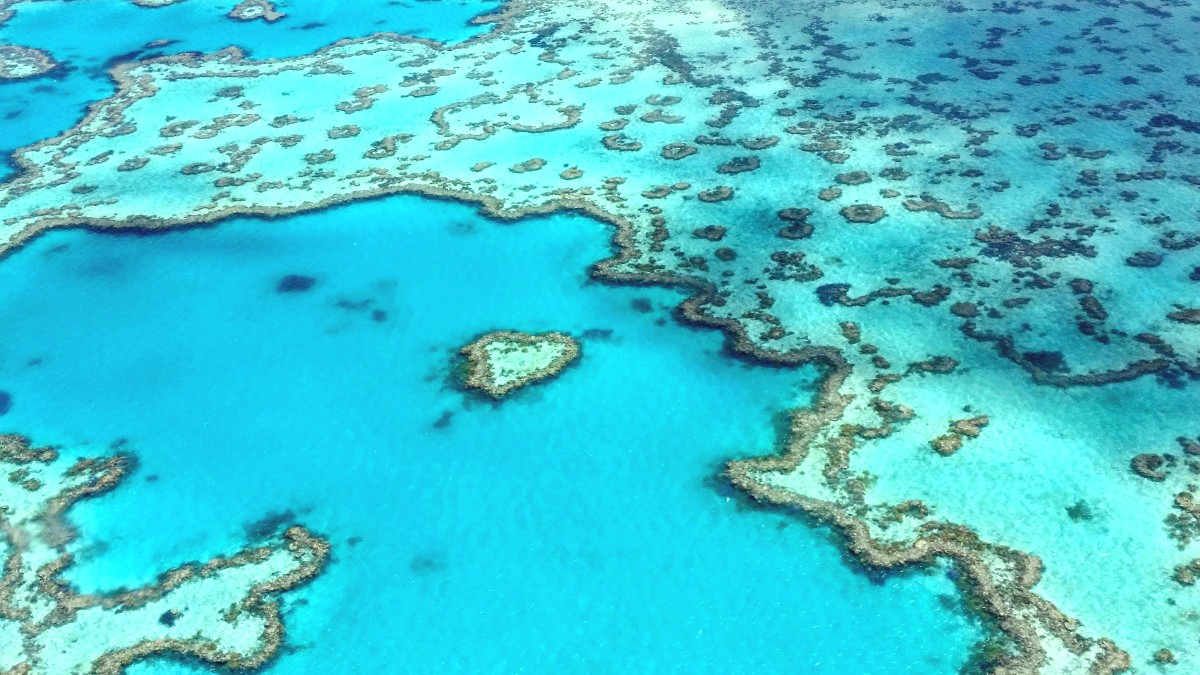
Queensland, Australia
This destination blends relaxation, adventure, and cultural experiences. Snorkeling among colorful fish, exploring ancient rainforests, or relaxing on secluded beaches, the Great Barrier Reef region delivers memorable moments.
Main Activities: Snorkeling, scuba diving, island hopping, rainforest exploration, wildlife viewing, cultural experiences.
Currency: Australian Dollar (AUD). Language: English. Time Zone: Australian Eastern Standard Time (AEST: UTC+10).
The Great Barrier Reef stretches along Australia’s northeastern coast, from the tip of Cape York Peninsula in the north to Bundaberg in the south. It stands not as one continuous reef but as a system with over 3,000 individual reefs and 900 islands. These islands range from small, uninhabited coral cays to larger continental islands with resort facilities. The reef lies in the Coral Sea, off the coast of Queensland, Australia’s second-largest state.
Far North Queensland is the mainland gateway to the reef. Cairns and Port Douglas serve as major hubs for accessing the northern parts of the reef. Cairns, a bustling city, mixes urban amenities with tropical charm. Port Douglas, a bit further north, presents a more relaxed, boutique village atmosphere. Both localities serve as departure points for reef tours and excursions into the adjacent Wet Tropics Rainforest. This rainforest, another UNESCO World Heritage site, creates a distinct "reef meets rainforest" environment.
Off Australia's northeastern coast.
Over 3,000 reefs and 900 islands make up the system.
Cairns and Port Douglas for northern reef tours.
Rare combination of two UNESCO World Heritage sites.
Different access points deliver distinct reef experiences.
The coastal areas around Cairns and Port Douglas have lush greenery, mountains, and pristine beaches. South of Cairns, other access points include Mission Beach, Townsville, and the Whitsunday Islands (from Airlie Beach, Proserpine, or Hamilton Island). These locations let visitors explore different Great Barrier Reef sections.
The climate here is tropical. It has distinct wet and dry seasons. This influences the landscape and the best times to visit specific areas or engage in certain activities. The region's geography means visitors combine marine adventures with rainforest exploration, yielding a comprehensive natural experience.
The combination of marine life and ancient rainforests creates a biodiversity hotspot. This unique ecological pairing makes the region a prime destination for nature lovers. Explore diverse habitats within a single visit.
Top Attractions: The Great Barrier Reef, UNESCO World Heritage Wet Tropics Rainforest.
Aboriginal and Torres Strait Islander communities have lived here for tens of thousands of years. They hold a deep connection to the Great Barrier Reef's land and sea country. Their traditional knowledge, cultural practices, and spiritual beliefs weave with the reef and rainforest ecosystems.
Their stories, art, and ancient sites tell of a long, continuous presence.
Generations of traditional knowledge and spiritual bonds with land and sea.
Captain Cook's charting of the eastern coast in 1770, with early maritime challenges.
Designated a World Heritage site in 1981, marking a turn for conservation.
European exploration began in the late 18th century. Captain James Cook mapped Australia's eastern coast in 1770. He famously ran aground on a Great Barrier Reef section near modern-day Cooktown, underscoring the reef's hazards for early mariners.
The Great Barrier Reef is Earth's largest living structure, a biodiversity hotspot. It hosts over 3,000 individual reefs, 600 continental islands, 300 coral cays, and 150 inshore mangrove islands.
It is home to 1,500 species of fish, 400 types of coral, 133 varieties of sharks and rays, and more than 30 species of marine mammals. This includes whales, dolphins, and dugongs. Six of the world’s seven species of marine turtles frequent its waters. The reef's ecological complexity extends to its role in global marine health.
The reef teems with an incredible variety of life, a truly unique natural wonder.
Comprises thousands of individual reefs, islands, and cays, stretching for thousands of kilometers.